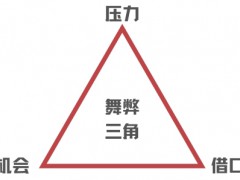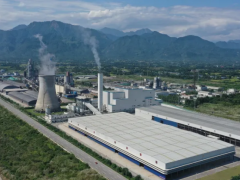据1月19日Rigzone报道,在努力恢复石油生产这个过程中,欧佩克及其盟友的剩余供应量越来越少,这可能为原油价格带来一个炎热的夏天。
从尼日利亚到俄罗斯,投资低迷和内部动荡使联盟成员国步履蹒跚,满足世界燃料消费强劲复苏的任务落到了少数中东产油国身上。随着产量提高,为应对紧急中断而保留的未开发供应将变得越来越不稳定。
摩根士丹利石油策略师Martijn Rats表示,“石油市场似乎正在进入一个安全系数很小的时期,价格将需要上升到需求受到一定削弱的水平”。
7月份假日出行季节将推动全球燃料使用量超过每天1亿桶,世界储备能力将几乎完全由沙特阿拉伯、阿拉伯联合酋长国和伊拉克持有,并且可能只有230万/天,这是自2018年以来最低水平。
虽然这种关系不是绝对的,但闲置产能低的时期往往与价格上涨相关,反之亦然,因为交易商要么对危机发生时的可用供应增加了信心,要么感到焦虑。2008年原油飙升至每桶近150美元历史高点,当时石油储备量变得非常低。
这使得欧佩克及其合作伙伴的艰难处境成为石油消费国令人担忧的前景。由于全球燃料需求经受住了奥密克戎冲击,国际原油价格已经处于每桶85美元以上的七年高位。
这助长了通货膨胀压力,给数百万人带来生活成本危机,危及全球经济复苏。美国国家安全委员会(National Security Council)发言人埃米莉·霍恩(Emily Horne)在一份声明中表示,白宫正在密切关注这一情况,并与包括欧佩克+成员国在内的产油国合作,确保供应增长以满足需求。
如果国际能源署的预测被证明是正确的,即美国、巴西和加拿大将在今年晚些时候恢复创纪录产油量,那么这种危机就会消退。
欧佩克+正在逐步恢复疫情期间停止的大量供应,每月逐步恢复40万桶/天。但事实上,由于安哥拉和尼日利亚等国面临支出减少和运营中断的问题,新增石油产量要少得多。
阿曼石油部长穆罕默德·鲁米1月12日在利雅得接受采访时表示,"这并不容易,因为存在产能问题。过去五年,对该行业的投资有限,我们现在正为此付出代价”。
12月,协议中的10个欧佩克国家只完成了规定的25万桶/天增产量的60%。这场危机延伸到了整个欧佩克+联盟,甚至该集团的第二大生产国俄罗斯也未能在12月增加产量,预计该国今后只能实现其配额产量的一半。
高盛集团(Goldman Sachs Group Inc.)大宗商品研究主管杰夫·柯里(Jeff Currie)表示,"由于缺乏投资,俄罗斯现在甚至无法达到欧佩克+目标。目前只有两个国家的产量,可以超过2020年1月产量,即沙特阿拉伯和阿联酋" 。
减产的不仅是欧佩克+,根据总部设在巴黎的国际能源署数据显示,由于油价下滑,2020年对新供应的投资暴跌了30%。美国页岩油生产商继续限制钻井开支,同时在多年资金消耗后还向股东归还资本。
随着中东重量级生产商负担加重,为在供应中断情况下提供缓冲而保留的闲置产能将被耗尽。这可能会使全球市场暴露在断供危险中,断供仍然是一个无法消除的威胁。
根据彭博社计算,到7月份,当美国驾车者上路度假,波斯湾出口商在家里烧更多燃料时,欧佩克+持有的闲置生产能力可能已经减少到每天只有230万桶。根据国际能源署数据,产能最后一次接近这种水平是在2018年第四季度。
如果欧佩克+继续按照目前的速度供能,随着该集团恢复剩余的闲置供应,下半年缓冲供应将变得更少。
美国银行(Bank of America)大宗商品和衍生品研究全球主管弗朗西斯科?布兰奇(Francisco Blanch) 表示,“随着需求恢复,2022年将是供应紧张的一年”。
王佳晶 摘译自 Rigzone
原文如下:
Oil Prices Potentially Set Up for Sizzling Summer
As they strain to restore oil production, OPEC and its allies are being left with a diminishing buffer of spare supplies -- potentially setting up crude prices for a sizzling summer.
With depressed investment and internal unrest hobbling coalition members from Nigeria to Russia, the task of satisfying the vigorous recovery in world fuel consumption is down to just a few Middle Eastern producers. As they raise production, the buffer of untapped supplies held back to cover any emergency disruptions will grow ever-more precarious.
“The oil market appears to be heading for a period with little margin of safety,” said Martijn Rats, oil strategist at Morgan Stanley. “Prices will need to rise to levels where some demand erosion takes place.”
By the time the holiday driving season propels global fuel use above 100 million barrels a day in July, the world’s reserve capacity will be almost entirely held in Saudi Arabia, the United Arab Emirates and Iraq, and could amount to just 2.3 million a day -- the lowest since 2018.
While the relationship isn’t absolute, periods of low spare capacity often correlate with rising prices -- and vice versa -- as traders either grow confident or anxious over how much supply would be available in the event of a crisis. Crude’s spike to an all-time high of almost $150 a barrel in 2008 came as reserves became perilously low.
This makes the travails of the Organization of Petroleum Exporting Countries and its partners a worrisome prospect for oil-consuming nations. International crude prices are already at a seven-year high above $85 a barrel as global fuel demand withstands the omicron variant of Covid-19.
That’s feeding into the inflationary pressure that imperils the global recovery by inflicting a cost-of-living crisis on millions of people. The White House is keeping a close eye on the situation, and is working with oil-producing countries including members of OPEC+ to ensure supply rises to meet demand, National Security Council spokeswoman Emily Horne said in a statement on Tuesday.
The danger could recede if IEA forecasts prove correct that the U.S., Brazil and Canada will return to pump at record levels later this year.
Missing Targets
Formally, OPEC+ is gradually restoring the vast swathe of production halted during the pandemic in gradual monthly installments of 400,000 barrels a day. But in practice, the volumes added have been significantly smaller as nations like Angola and Nigeria struggle with diminished spending and operational disruptions.
“It’s not easy because there’s a problem of capacity,” Oman’s Oil Minister Mohammed Rumhi said in an interview in Riyadh on Jan. 12. “The last five years the investments have been limited in the industry and we’re paying the price for it now.”
Last month the 10 OPEC nations in the accord managed only 60% of their stipulated 250,000 barrel-a-day increase. The crisis extends across the OPEC+ coalition, with even Russia -- the second-largest producer in the group -- failing to increase output in December. The country is expected to deliver only half its permitted hikes going forward.
“Russia can’t even hit their OPEC+ target right now because of a lack of investment,” Jeff Currie, head of commodities research at Goldman Sachs Group Inc., said in a Bloomberg television interview. “There are only two countries that can produce more today than they could in January 2020. Who are those? Saudi Arabia, the UAE.”
The downturn extends beyond OPEC+. Investment in new supplies tumbled by 30% in 2020 as oil prices slumped, according to the Paris-based International Energy Agency. U.S. shale producers continue to limit spending on drilling while they return capital to shareholders after years of burning through cash.
As the burden intensifies on the Middle East heavyweights, the spare capacity they hold back as a kind of shock absorber in case of a supply disruption becomes depleted. That could leave global markets dangerously exposed to outages, which remain a constant threat.
By July, when U.S. motorists take to the road for vacations and Persian Gulf exporters burn more fuel at home for air conditioning, spare production capacity held by OPEC+ may have diminished to just 2.3 million barrels a day, according to Bloomberg calculations. Capacity was last near such levels in the fourth quarter of 2018, according to the International Energy Agency.
If OPEC+ continues on its current trajectory, the cushion will become even smaller in the second half as the group revives the remainder of its offline supplies.
“It’s going to be a tight 2022 as demand recovers,” Francisco Blanch, global head of commodities and derivatives research at Bank of America, said in a Bloomberg TV interview.
免责声明:本网转载自其它媒体的文章,目的在于弘扬石化精神,传递更多石化信息,并不代表本网赞同其观点和对其真实性负责,在此我们谨向原作者和原媒体致以敬意。如果您认为本站文章侵犯了您的版权,请与我们联系,我们将第一时间删除。







